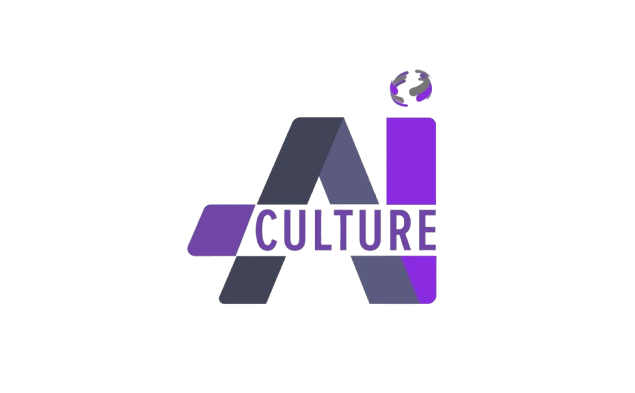Computer Vision Services

Computer Vision Services
Businesses aiming to maintain their competitive edge in the current era of fast technological progress are increasingly compelled to leverage the capabilities of artificial intelligence. AI Culture is pleased to provide state-of-the-art Computer Vision Services and Solutions. These are specifically designed to address the varied requirements faced by modern businesses. Whether your objective is to streamline operations, boost security protocols, or transform the way customers interact with you, our proficient staff is fully prepared to materialize your vision.


Why should we consider aI computer vision services from aI culture?
Artificial intelligence (AI) computer vision services might be useful for a number of reasons. Image categorization, object detection and text extraction are just a few examples of the manual processes that computer vision can automate. Companies may save both time and money by doing this. AI Computer vision enables the gathering of insights from visual data. The data would be extremely challenging, if not impossible, to achieve by manual means. Some applications of computer vision include monitoring inventory levels, analyzing consumer behavior in businesses, and identifying potential safety risks. You can use the insights derived by computer vision data to make better decisions. A store, for instance, might improve their inventory levels based on computer vision data that shows which goods are selling well and which ones aren’t. Businesses may get an advantage over their competitors by automating processes and extracting insights from data using computer vision. Computer vision has several potential applications; for instance, it might help manufacturers enhance product quality or logistics companies optimize delivery routes.

About Computer Vision Services
As AI attempts to imitate human thought processes, computer vision solutions seek to replicate the complex nature of the human visual system. That is the simplest way to explain computer vision. If you want a more technical definition, we can go further. The term “computer vision” (CV) refers to a branch of artificial intelligence that enables computers to process visual data such as photos, videos, and GIFs. The development of computer vision Computer vision and artificial intelligence systems can “see” visual things. It determine their identity and classification, and respond appropriately. Visual data analysis allows this invention to gain a near-perfect understanding of a problem. It identify the most effective solutions or reasonable actions, and do it without missing any aspects. Fortune Business Insights estimates the global computer vision market at USD 20.31 billion in 2023 and expects it to grow to USD 175.72 billion by 2032, reflecting a CAGR of 27.3%. But for computer vision systems to self-train and be useful in business, massive amounts of data are required. Through repeated data analysis, they learn to differentiate between objects and, eventually, identify photos. Somehow, it’s doable. To achieve this, a convolutional neural network (CNN) and deep learning, a branch of machine learning, are utilized. Machine vision programs can eventually “digest” more data than humans do, allowing them to learn to differentiate between images with greater accuracy.

Key Benefits of Computer Vision Services
We are offering Custom AI Audio Analytics for everyone who manages billions of dollar business. We Explore, We Accelerate & We Innovate Chatbots For Customer Engagement

Image & Video Pre-Processing
By leveraging neural networks, advanced computer vision is capable of executing image transformations that normal image processing algorithms are unable of. For instance, it is possible to add or decrease the quantity of trees in an artificial manner without detecting any evident transformation.

Image transformation
It is possible to transform the view of the sky from Planet to the planet or generate absent sections of the image. The potential for image transformation and enhancement is virtually limitless; all that is required is the development of a specialized model for a given task.

Object Detection
Object Detection is a part of Computer Vision Services that uses deep neural networks to recognize patterns and construct pixel features in order to detect objects such as humans, cats, canines, vehicles, and bicycles, among others, on photographs. Face recognition is a vital component of object detection.

Scene Segmentation
In the past, object detection in images involved just the selection of the object's position by the rectangle. Currently, this method can be improved by identifying the specified object, thereby splitting the image across various objects and producing an outcome that closely resembles the stained glass. The applications of this technology is in autonomous navigation and radiology (detection of malignant tissue changes) will be extensive.

Get Started With Us Today

Contact Us
To get in touch with us, fill out the NDA-protected contact form, book a time a Zoom meeting with our experts.

Get a Consultation
Connect with us on a call with our team to know the feasibility of your project idea.

Cost Estimate
Based on the project requirements, AI Culture team share a project proposal with budget and timeline estimates.

Project Completion
Once the project is signed, we bring together a team from a range of disciplines to kick start your project.



Popular Questions
What is Computer Vision?
A branch of artificial intelligence, computer vision is concerned with getting information of value from visual inputs like images and videos. It operates in a manner analogous to human vision, in which repetition of object observation enables humans to discern patterns and formulate abstract distinctions, classify, and categorize known entities. Computer vision applications operate in a comparable fashion.
How Computer Vision solutions works?
Computer vision solutions acquire visual inputs through the utilization of cameras or more advanced systems that rely on LIDAR, Infrared, or Time-of-Flight sensors. Following that, a convolutional neural network (CNN) was applied to the data. It is composed of extensive interconnected nodes and edges that replicate the behavior of a neuron. By leveraging neural networks, computer vision applications are capable of self-learning through the recognition of common patterns in examples using labeled data.
What is A Convolutional Neural Network (CNN or ConvNet)?
A Convolutional Neural Network (also called CNN or ConvNet) is a type of neural networks that specializes in processing data that has a grid-like topology, such as digital images (they contain a series of pixels arranged in a grid-like way). A CNN can have tens or hundreds of layers that each learn to detect different features of an image. They can start from detecting very basic features, such as brightness and color, and increase in complexity to identify features that allow them to find unique object features. Convolutional Neural Network and deep learning can be considered a heart of computer vision applications.
What industries can benefit from computer vision services?
There are numerous industries in which computer vision is utilized, including manufacturing, healthcare, retail, automotive, and agriculture. In the context of retail experiences, production process optimization, task automation in agriculture, and patient care improvement, computer vision can offer invaluable, custom-tailored solutions.
How long does it take to develop and deploy a custom computer vision solution?
The development and deployment plan for a custom computer vision solution is dependent on a number of factors including the project’s complexity, the availability of data, and particular specifications. Without sacrificing quality, our team collaborates closely with clients to establish realistic timelines and guarantee on-time delivery.
How secure are computer vision systems, especially in applications like facial recognition?
In the development of computer vision systems, security is of the highest priority, especially for sensitive applications like facial recognition. We employ stringent security protocols, encryption, and privacy controls, among others, to protect data and guarantee adherence to regulatory obligations.
Can existing infrastructure and systems be integrated with computer vision solutions?
Our team possesses expertise in the smooth integration of computer vision systems with pre-existing software solutions and infrastructure. We assure interoperability and compatibility with legacy systems, third-party platforms, and proprietary software in order to minimize downtime and maximize productivity.
What are the differences between Image Processing and Computer Vision?
Although both image processing and computer vision deal with visual data, the terms should not be used interchangeably. Image processing consists, at its most fundamental level, of enhancing or modifying images to produce a new outcome. It is not required to identify or classify the visual content in order to modify certain of its attributes; rather, it can concentrate on enhancing contrast, resolution, obscuring sensitive data, cropping specific regions, and so forth. The primary objective of computer vision solutions is to comprehend the context of the visual objects they encounter and execute the intended response
What ongoing support and maintenance services do you offer after the deployment of a computer vision solution?
We provide comprehensive support and maintenance services to ensure the smooth operation of your computer vision system post-deployment. This includes troubleshooting, software updates, performance monitoring, and proactive maintenance to address any issues and optimize system performance over time. Our dedicated support team is available to assist you with any queries or concerns promptly.

Contact Us

Reach out for tailored solutions & expert support. Let’s drive your business forward.


